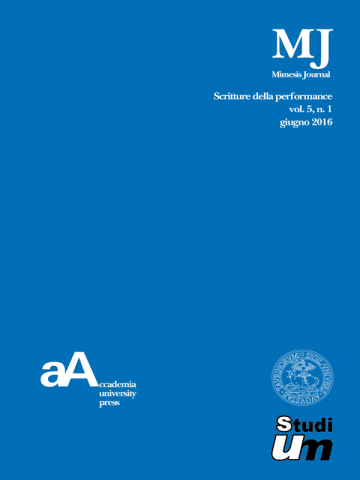Le strutture della commedia umana kantoriana
Tadeusz Kantor e il teatro yiddish
DOI:
https://doi.org/10.4000/mimesis.1116Abstract
The author reflects on the relationships between the theater of Tadeusz Kantor and the Yiddish theater. She explains that the experience of the Dybbuk, the work of An-ski, mise en scène of Vachtangov (Moscow, 1922) with the Habima Theatre, that Kantos saw in 1938, was deeply imprinted in the Polish director’s creation, thus Picon-Vallin shows us that the roots of the work of Kantor also feed on the “poor” Yiddish theater. Two sources are vital, The Dybbuk and The Night of the old market of Isaac Leib Peretz, therefore Picon-Vallin indicates the fecundity of Yiddish culture and reminds us that so far it has not quite yet noticed.


